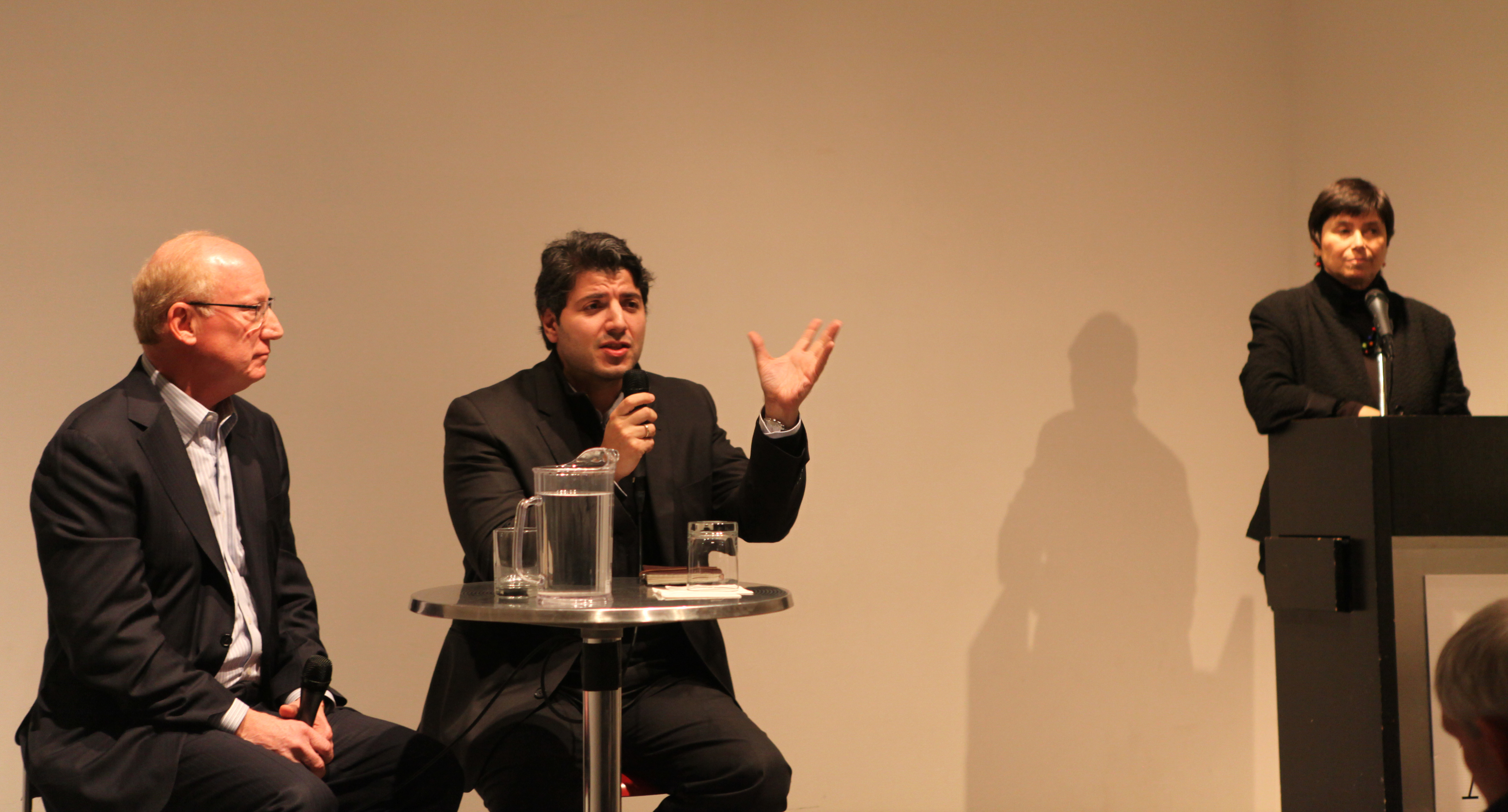by James Way
The 2007 film Bird’s Nest, directed by Christoph Schaub and Michael Schindhelm, follows architects Jacques Herzog and Pierre de Meuron as they navigate Chinese culture and politics – governmental and architectural – to build the National Stadium for the 2008 Summer Olympics in Beijing.“How brave and naive Herzog and de Meuron were to think that they could pull this off,” marveled Thomas Fridstein, FAIA, RIBA, executive director at Cuningham Group China, during the post-screening conversation. Herzog and de Meuron faced overwhelming odds when they started designing their bid for the Beijing National Stadium for the 2008 Olympics. While selected by the government and by popular vote, the design subsequently encountered conservative criticism, budget reductions – nearly 50%! – and cultural symbolisms (a green roof can represent a cuckold). De Meuron described the process as “a personal experience where you discover your own limits.” True of many projects, this is especially compounded when working outside of one’s own cultural, language, and political systems.
The collaboration, which included artist Ai Weiwei, who has since renounced his participation in the regime-glorifying structure, and the China Architecture Design and Research Group, yielded an iconic work immediately recognizable due to international broadcasting during the opening ceremonies. While de Meuron claims they “didn’t want to glorify” Communism, Herzog counters that they “would not have been able to build so quickly in a democracy.” From winning the commission to the start of the Olympic Games, the design and construction of the 90,000-seat, 2.8-million-square-foot stadium took five years and two months. However, the film follows Herzog and de Meuron to shortly before the stadium’s completion. Sidestepping national associations and post-occupancy usage, the documentary focuses on process rather than solely the building, or any of its aftermath.
During the post-screening discussion, Alkis Klimathianos, senior associate principal at Kohn Pedersen Fox Associates (KPF), who consulted for Athens about adaptive reuse in post-Olympic Athens, and Fridstein brought insight to the Bird’s Nest’s post-Olympic usage. Despite small-scale use for a Sedgwick course, soccer matches, and as a tourist attraction, the lack of population density and outlying location make the stadium a dislocated relic. Fridstein thinks this combination will leave the stadium as it is during the short term. They both agreed that densification around it would at least help it to attain an Eiffel Tower-like position in the city. But Klimathianos argued, “If the social infrastructure isn’t there you’re left with only the bling.”
James Way, Assoc. AIA, marketing manager at Dattner Architects, has contributed to Tokyo Art Beat, The Architect’s Newspaper, and e-Oculus.
Event: Bird’s Nest Film Screening: Urbanism and the Olympics
Location: Center for Architecture, 12.12.13
Speakers: Alkis Klimathianos, Senior Associate Principal, KPF; Thomas K. Fridstein, FAIA, RIBA, Executive Director, Cuningham Group China
Organized by: Center for Architecture


